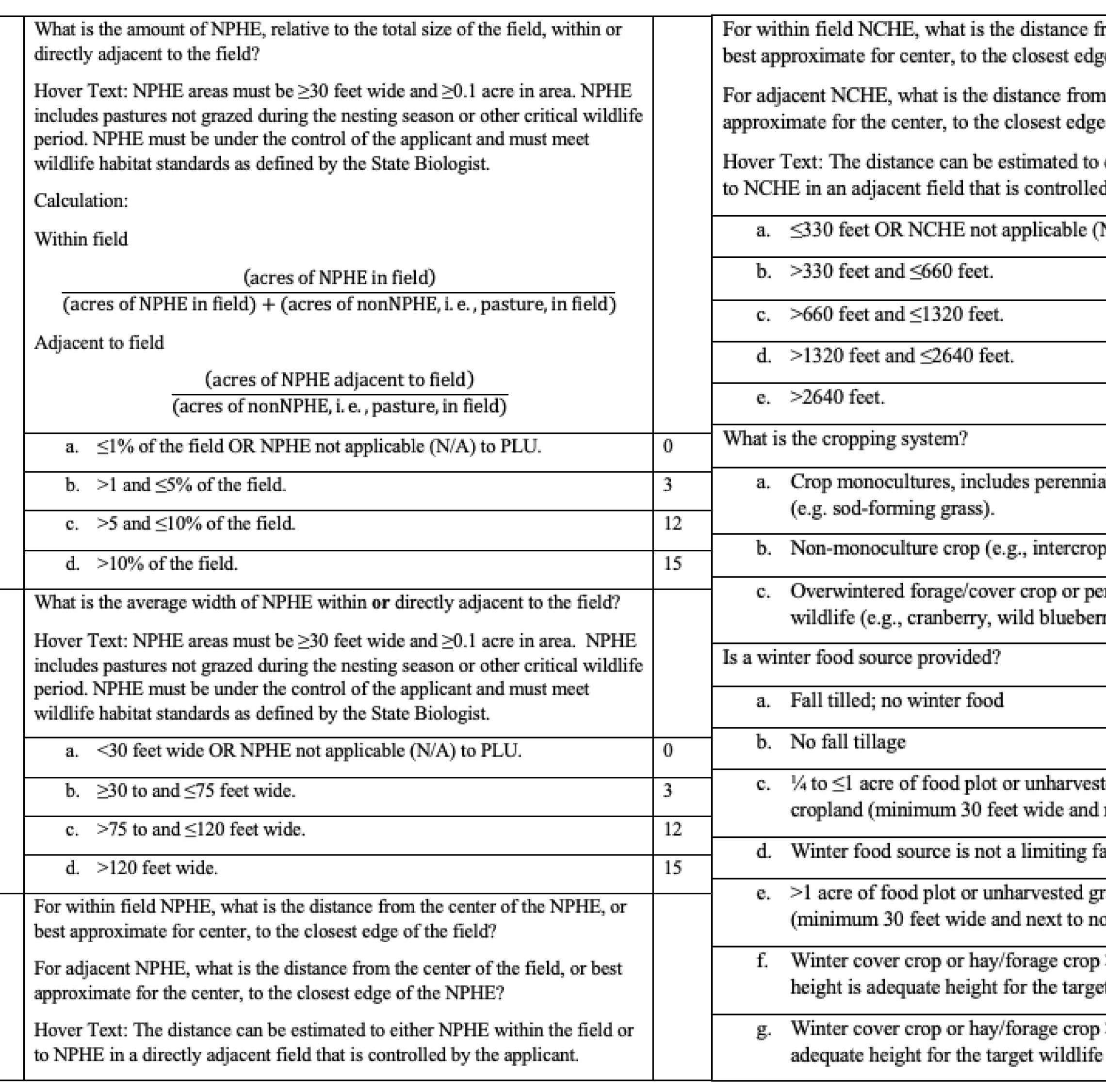
Democratizing access to sustainability grants for farmers
BackgroundGreenfield is an AgTech startup that helps farmers assess and manage their land using satellite imagery. With growing interest in regenerative agriculture, Greenfield saw an opportunity to support farmers navigate public funding programs tied to sustainability by improving USDA’s sustainability grant application experience.
My roleAs a product designer, I was responsible for shaping the end-to-end user experience of Greenfield’s USDA module over a 16-week development cycle. I collaborated closely with USDA policy experts, agronomists, engineers, and data scientists to design a product that embedded regulatory logic within a user-centered workflow.
ProblemWhere policy meets the field
The USDA’s Environmental Quality Incentives Program (EQIP) is one of the largest funding sources for on-farm conservation in the U.S. It reimburses farmers for adopting sustainable practices that improve soil health, reduce erosion, and build long-term resilience.
But the intent of the program is often lost in execution. EQIP’s process is dense—defined by over 175 conservation practice codes, state-specific funding priorities, and a multi-month application pipeline that offers little clarity or feedback. For most farmers, even those eager to adopt regenerative practices, EQIP feels risky, inaccessible, and bureaucratic.
Modernizing access to EQIP meant translating regulatory systems into tools that supported real-world decision-making without losing the complexity or intent behind the policy. Our team was on a mission to help farmers move through the application process with confidence.
Ref 1. Resource concern assessment
The first step in understanding eligibility involves a multi-dimensional assessment of land resource concerns. Includes hundreds of technical questions that require high level of expertise.
Ref 2. Technical Service Provider Directory
Application assistance was available. But the quality of support varied depending on the service provider and the region.
Ref 3. Prioritization Criteria & State Ranking
State-level priorities updated annually, but farmers had little visibility into how their applications were scored. Funding and ranking information was heavily decentralized.
Despite shared goals, funding remains hard to access for stakeholders
While farmers, advisors, and the USDA all share a common interest in advancing sustainability, the current path to accessing conservation funding is fractured, labor-intensive, and discouraging.
For FarmersA risky, time-consuming bet
Most farmers didn’t know about the available USDA programs or didn’t believe their effort will pay off. Even those who apply, fewer than 10% of total U.S. farmers, face steep odds of <25% acceptance rate.
Confusing eligibility criteria, inconsistent application steps, and months-long wait time for the initial appointment with the USDA representative made the initiative more of a gamble than a partnership.
“It takes a lot of effort to apply for a conservation program, and it’s a waste of time if I’m not accepted.”
-Farmer
For AgronomistsA broken incentive system
Agronomists, often the bridge between policy and practice, faced their own barriers. Registering as a Technical Service Provider (TSP) for USDA was complex, under-compensated, and time-consuming.
Since 2004, the number of registered TSPs has dropped by 50%. Those who remain are left navigating complexity (>175 practice codes, each with unique requirements at the national, program, and state levels).
“It’s a black box for us. We don’t know what will be approved or rejected… the criteria isn’t shared.”
- Agronomist
For USDAA scaling problem with limited capacity
The USDA is tasked with supporting conservation at scale but faces bandwidth and visibility challenges. Most farmers don’t understand their land’s “resource concerns,” and there aren’t enough representatives to guide every farmer individually. Without scalable tools or outreach, awareness stays low, and funding goes unused.
“We have more volume than we can deal with, and we’re understaffed.”
-USDA officer
approachA Test-and-Learn approach that built farmer confidence
Our design process was structured around testing, fast iteration, and re-testing until production. We prioritized early prototyping and validation with real farmers and agronomists.
After developing the initial prototypes with experts, we conducted a series of interviews and usability sessions with farmers and agronomists. These sessions uncovered the importance of anchoring real-world land management decisions to reform the application process.
Farmers were already interested in trying sustainable practices like cover cropping or nutrient management, especially when they saw visible issues like erosion or declining yield
Most were concerned about making the wrong commitment, as adopting new practices often required new equipment, labor planning, and field downtime. Without clear signals on reimbursement or approval odds, many chose not to apply at all
Even the most engaged farmers described the application process as ‘a second job.’ Long delays, unclear eligibility, and difficulty finding the right forms discouraged follow-through
This feedback shaped a core product principle. We needed to create a tool that helped farmers understand what was possible, what was viable for their land, and what would likely be approved before they committed to anything.
SolutionGreenfield's USDA module helps farmers make strategic and sustainable decisions while reducing the application process by 50%
Discover current land issues and eligibility for the program
The Eligibility Info and Practice Suggestion modules collaborate to identify opportunities for maximizing sustainable grants and the relevant practices to achieve them.
Farmers can preview the recommended practices and the implementation requirements to determine which practices they are willing to commit to.
Understand how the new practices will impact the farm as a whole
Estimate yield impact, reimbursement rate, and application acceptance rate before applying
After selecting practices and fields for the program, farmers can view the impact on production, grants, and acceptance rates.
Next











